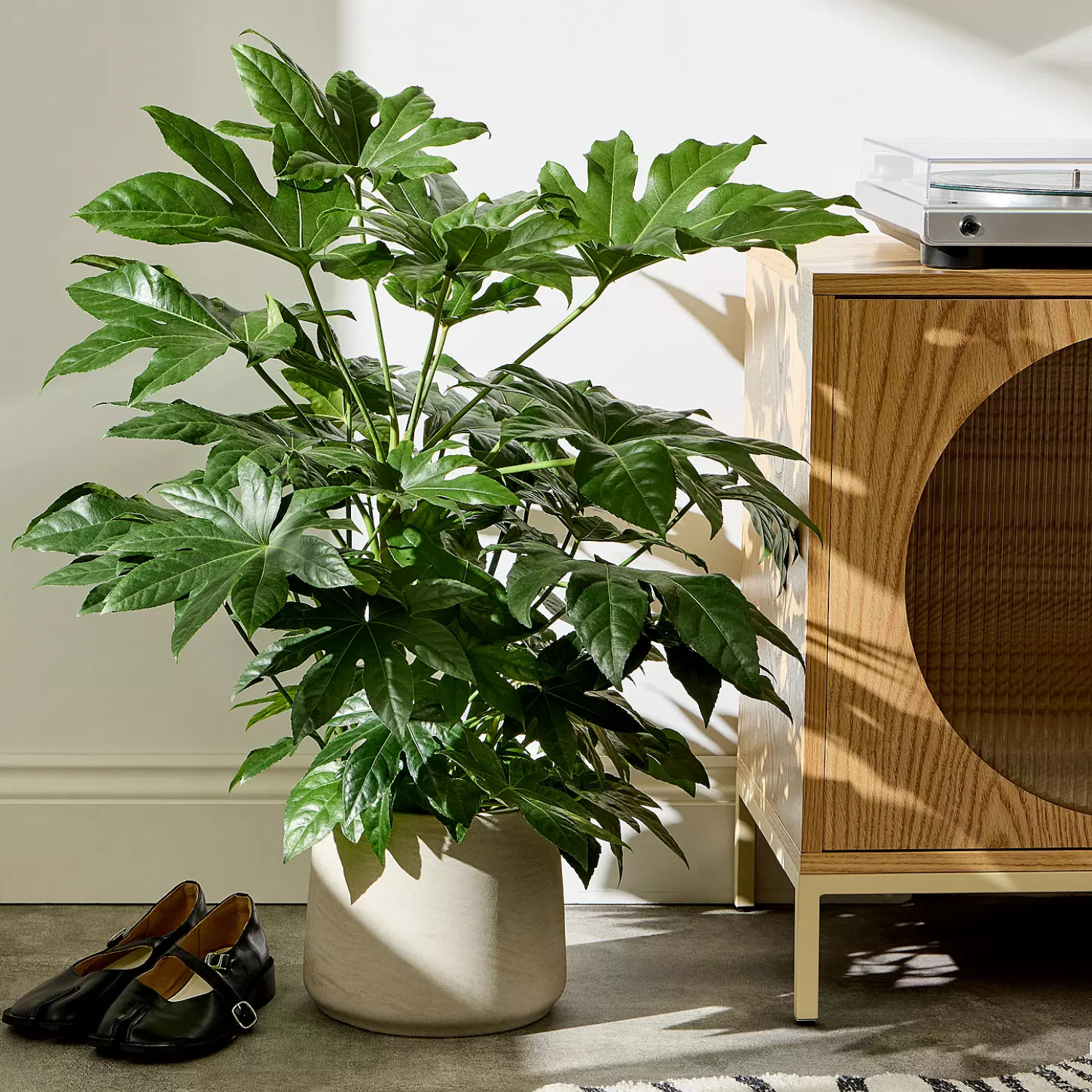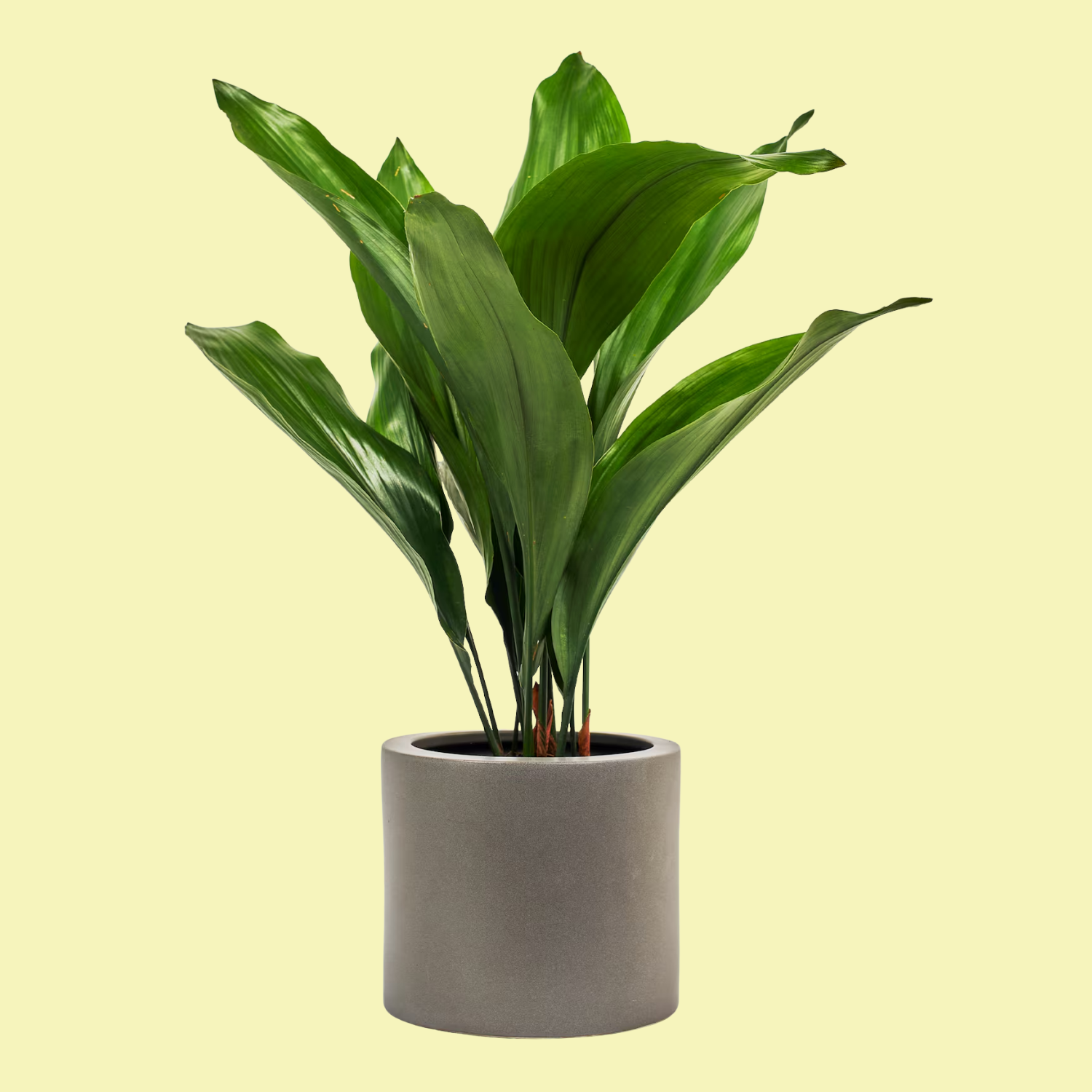The 4 Most Common Problems for Houseplants in Winter — And How to Head Them Off Before They Happen
After all, prevention is better than cure when it comes to your indoor plants surviving the colder months
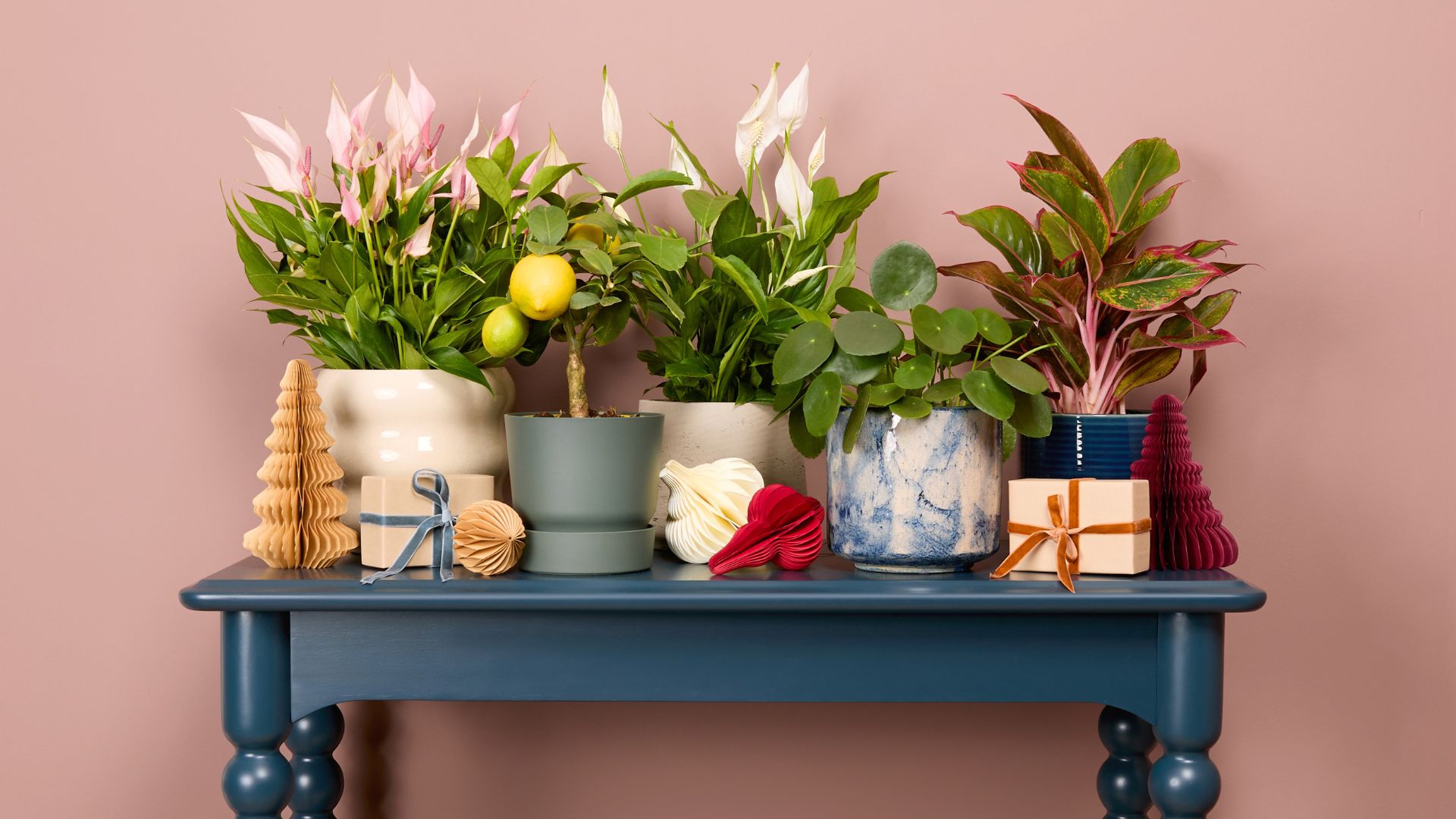

If you've been cultivating your interior garden for some time now, then you know that the colder months offer up some challenges. This season is much more prone to dropping leaves and color changes in your cultivars — and nobody wants that.
Even the best winter indoor plants are susceptible to the aftermath of the drop in temperature and humidity. So, it's important to know about the potential challenges to come and how to prevent them before it's too late.
To that point, here are four very common problems for houseplants in winter. Plus expert insight on how to safeguard them ahead of time.
1. Overwatering
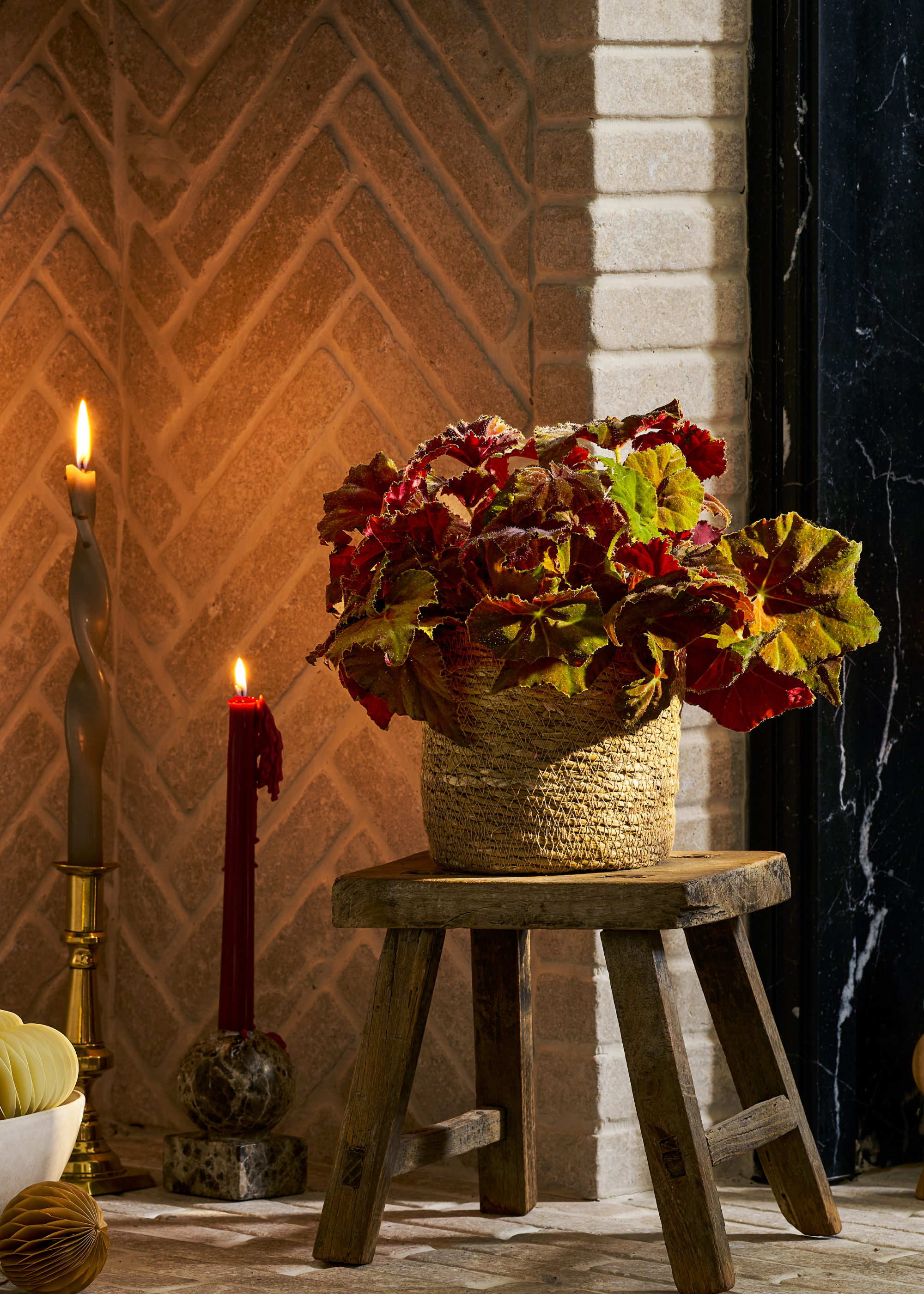
Kelly Dyer, gardening expert and plant doctor at Patch Plants, tells me that overwatering is a popular faux pas during the winter. "Classic signs of this are yellowing leaves, browning stems, and a plant that looks wilted when the soil is still wet. With it being less hot and sunny, your plants won’t be drawing up as much water from the roots to cool and hydrate themselves through transpiration," she notes.
"This means that if you continue to water as often in winter as you do in summer, the soil around your plants' roots is likely to stay wet for a lot longer, which can quickly result in the dreaded root rot. For many plants, this can mean a reduction in watering from once a week to every two weeks."
When watering houseplants, she recommends checking the soil to a depth of at least two inches before watering. "If it’s still moist, leave it a few more days. If it’s dry, give your plant a drink," she notes. "Remember that plants like begonias are particularly susceptible to overwatering. On the other hand, there is no need to water cacti and succulents at all over winter."

Kelly Dyer is an RHS-trained Horticulturalist with years of practical experience as a senior gardener, glasshouse gardener, and freelance garden designer. As Patch’s Plant Doctor, she helps customers hone their own skills with in-depth plant care advice and troubleshooting.
2. Inadequate Humidity

The start of November often marks the switch from doubled blankets to radiators being turned on. And while this will make your home feel cozy, it can also dry out the air and affect your plants. "Signs of stress from dry air include curling leaves, dry, brown, crispy leaf tips, and patches along leaf margins," says Kelly. "Despite our tropical houseplants enjoying the warmer temperatures as much as we do, they cannot tolerate low humidity."
The Livingetc newsletters are your inside source for what’s shaping interiors now - and what’s next. Discover trend forecasts, smart style ideas, and curated shopping inspiration that brings design to life. Subscribe today and stay ahead of the curve.
She goes on to point out that dry air is particularly unfavorable for forest-growing plants like bromeliads and types of orchids. But don't worry, there are a couple of things you can do to help your houseplants. "Start by arranging your plants in the naturally steamier rooms of your home, like your bathroom and kitchen. You can also group plants together to create their own microclimate," she advises.
"I recommend investing in a humidifier, particularly if you live in a modern newbuild that is very well insulated. And you can also place bowls of water near your radiators so that as this evaporates, it gradually increases the ambient humidity."
As a final resort, she also suggests applying a top dressing of hydroleca clay balls to the soil surface of your houseplants. She explains that these will continue to slowly release water vapour even after watering.
If you're going down the humidifier route, a moss humidifier is by far one of the coolest-looking accessories that won't take away any design points. Or, this Westland Hydroleca is a great option au naturale.
3. Red Spider Mites

Unfortunately, winter indoor gardens are no strangers to red spider mites. "Look out for fine webbing around stems and foliage and stippled yellowing on leaf surfaces. The mites are minute but noticeable if there’s an infestation," says Kelly.
"These mites thrive in hot, dry air where the humidity is low, so they often emerge from a state of dormancy in winter, when the conditions become favorable for them. Consider increasing humidity as you would."
She also recommends preventively spraying the tops and undersides of leaves with a natural bug control treatment. "Although bear in mind that some plants with more sensitive leaves, like alocasia ‘frydek’, won’t like this," she warns.
"If you notice red spider mites on one of your plants, isolate it immediately and treat it by showering the leaves under room temperature water, letting it dry, and then applying a natural insecticide. You may need to repeat this every few weeks."
This Spider Mite Killer Spray by READY STEADY DEFEND from Amazon is a brilliant choice for your indoor garden. But it can also rescue your outdoor plants, too.
4. Lack of Light

According to Kelly, you can tell if your houseplants are lacking light at the first sight of yellowing leaves and prolonged damp soil. "While your plant may have been able to cope with the low light level of a shady corner in a north-facing room during summer, in winter, this will be too dark," she notes.
"If you think of sunlight as food for your plants, allowing them to generate the energy they need to grow, then you want to give them as much of this as possible over the coming months. Consider moving your sun-loving plants like types of anthuriums, closer to windows where possible."
And during the day, she recommends giving them the kindness of drawing back the curtains and letting in as much light as possible. You can also consider light therapy for your houseplants or prioritize housing low-light houseplants for shorter days.
Hardy Winter Houseplants
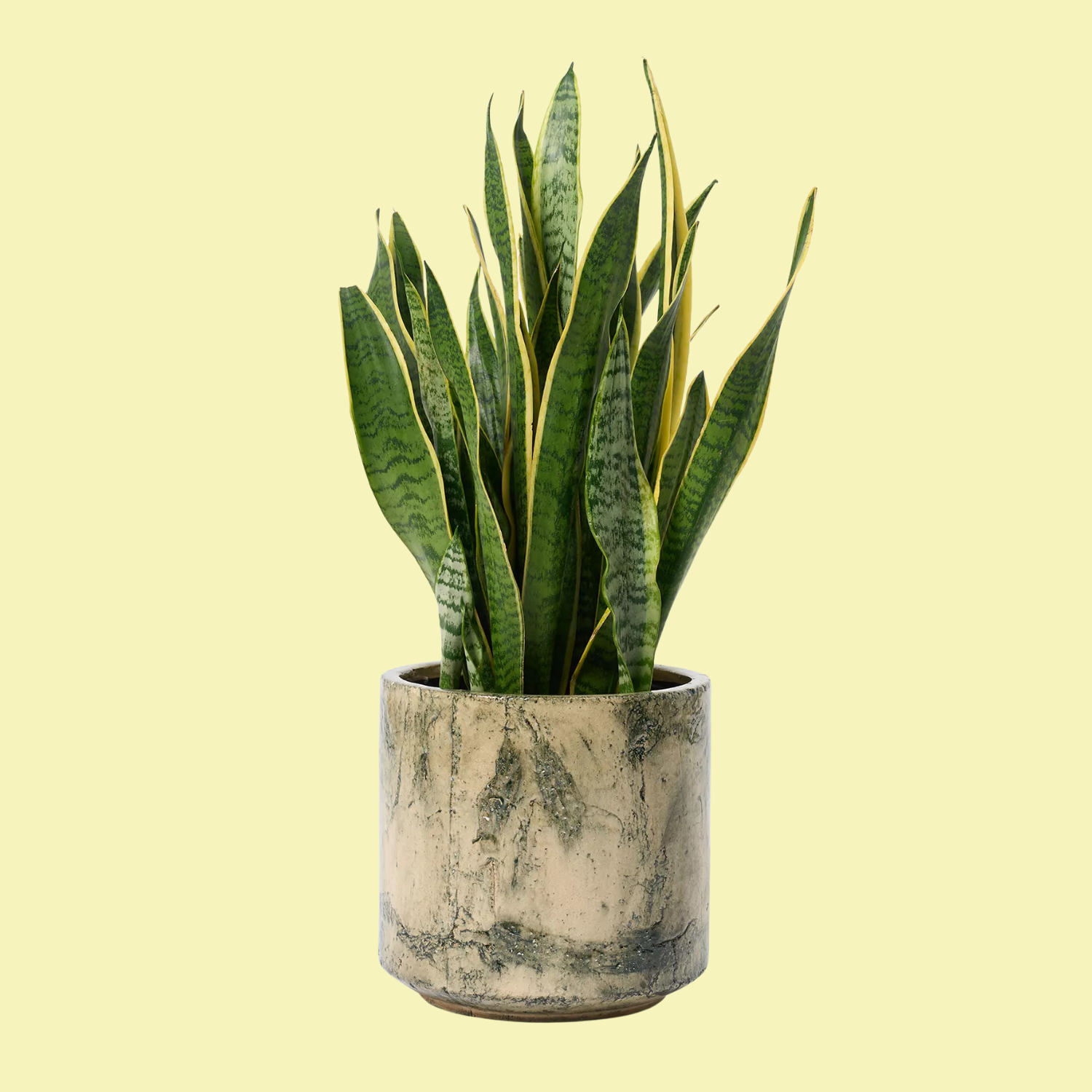
Height: 70 cm to 80 cm
Snake plants are known to be one of the most low-maintenance indoor plants around, making them a stress-free option for your home this winter.
Remember to pay extra attention to your Christmas houseplants, too. After all, they are the stars of the show over the holiday season. And if you have a Christmas cactus in your cohort, our thorough guide will help you fend off any problems through December and thereafter.

Amiya is a Home Wellness Writer at Livingetc. She recently graduated with a Masters Degree in Magazine Journalism from City, University of London, and has lent her words to beauty, fashion, and health sections of lifestyle publications including Harper’s Bazaar and Women’s Health. Her experience as a research analyst has equipped her with an eye for emerging trends. When she’s off the clock, she can be found reading, listening to music, or overanalyzing her latest Co-Star update.
